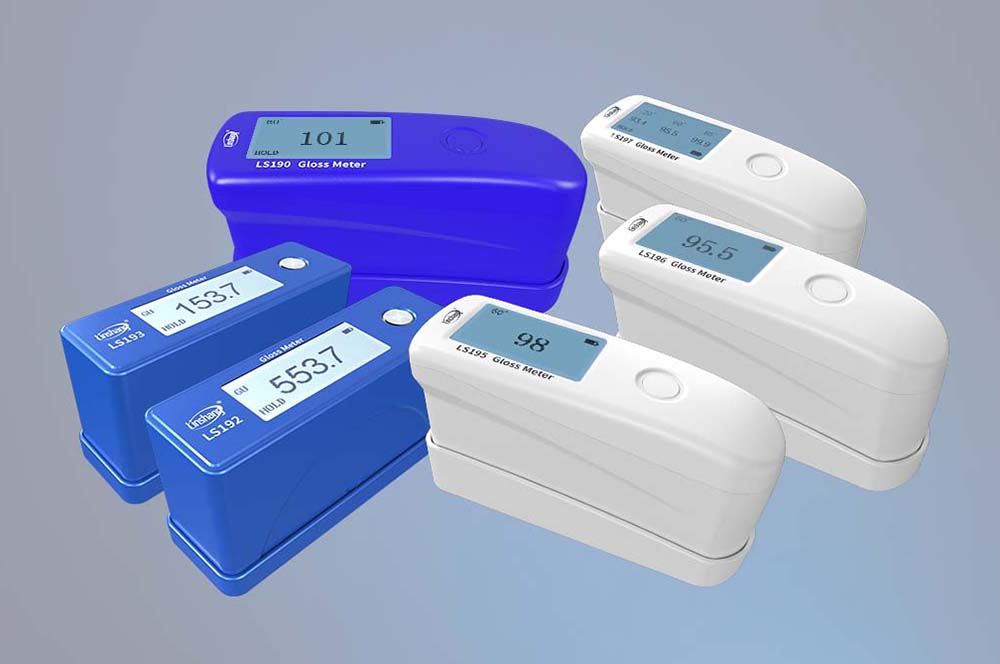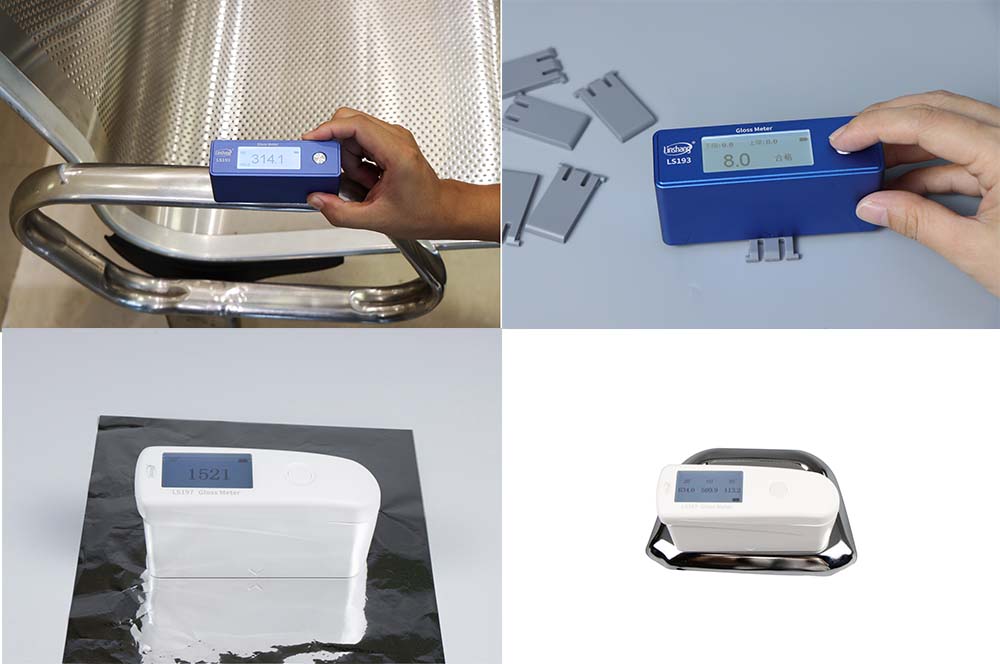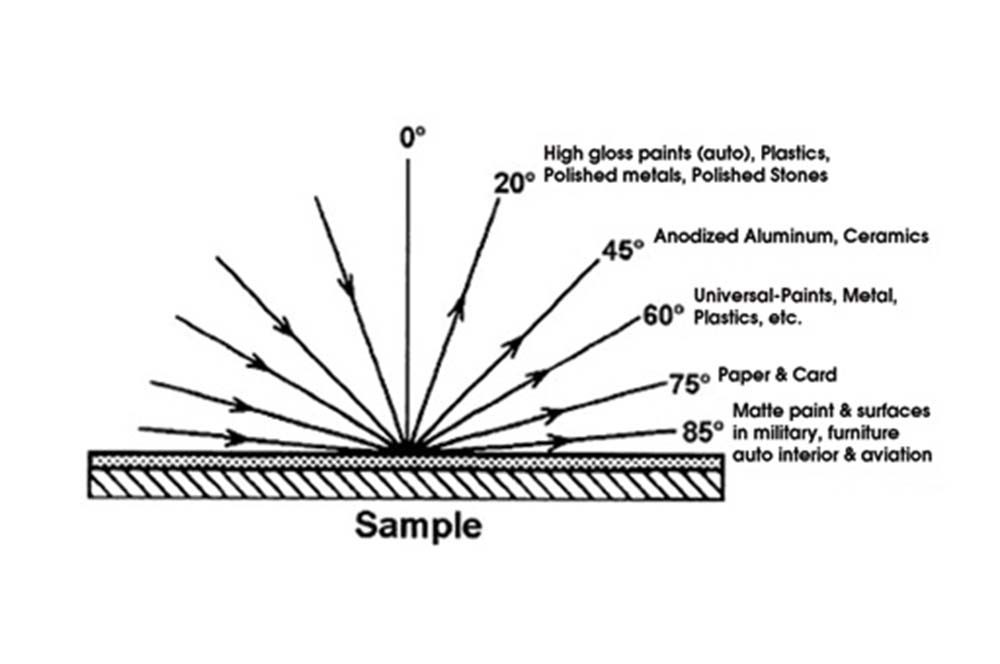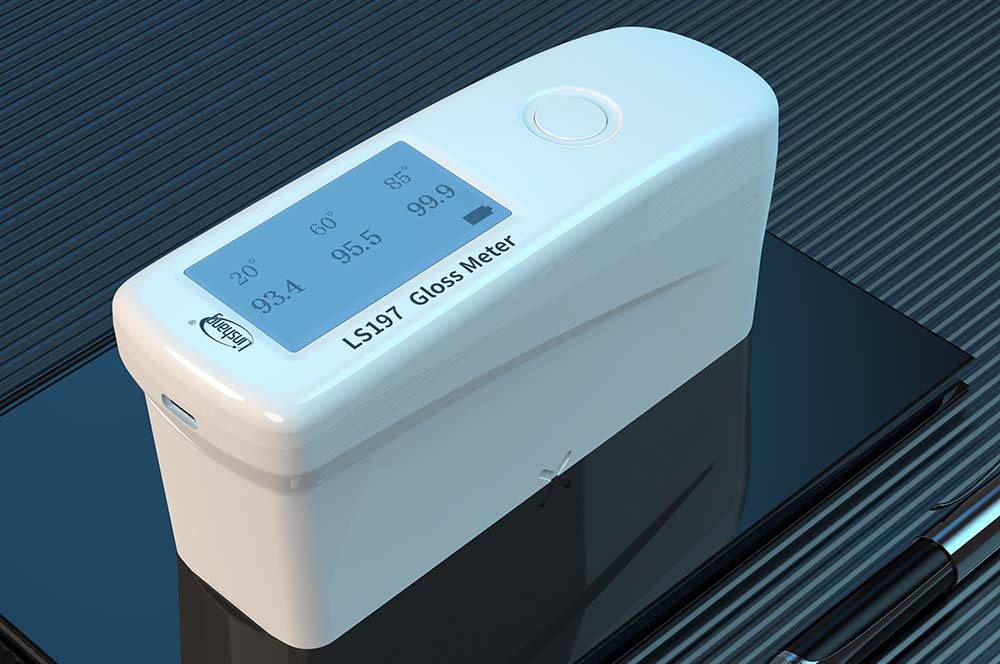How does a digital gloss meter objectively measure gloss?
Glossiness is an important aspect to measure when it comes to the visual appearance of any object. The perception of gloss may be related to the finish and texture of the product as well as the way the sample is illuminated and viewed. This article will detail how a digital gloss meter objectively measures gloss.
Surfaces with high reflectance are considered glossy, shiny or lustrous, while surfaces with lower reflectance are considered semi-glossy or non-glossy. Manufacturers of different products often specify different levels of gloss depending on the product. For example, car or magazine manufacturers often aim for a higher gloss level than companies that paint military or naval vehicles.
That said, in many cases, a high gloss finish means high quality and it is important to ensure that gloss levels are consistent not only throughout the product, but also within the manufacturing lot.

How can gloss be measured objectively?
Generally, the use of a digital gloss meter provides a quantifiable gloss measurement in "GU". Gloss is measured from 0 to 2000 GU, where 0 GU is a perfect matte finish that reflects no light at all and 2000 GU is a perfect mirror finish that reflects all light.
While the naked eye is perfectly capable of recognizing variations in gloss, it is not sufficient to assess appearance, and the way individuals perceive gloss may vary depending on their personal experience. What is too smooth for a naval ship builder, for example, may be too dull for a luxury yacht builder.
Without a digital gloss meter, the human eye may discern variances in gloss levels depending on the sample's gloss level. For example, it is estimated that the human eye can detect surface differences of about ±3GU when comparing low gloss surface samples of about 5GU. However, on surfaces with 60GU and higher gloss levels, any gloss variation is extremely difficult to detect.

A digital gloss meter measures gloss by shining light onto a test surface at a fixed angle (called the angle of incidence). Typically, the more light reflected, the smoother the surface will be, as high gloss surfaces reflect light very well. On the other hand, semi-gloss and matte surfaces will diffuse light, scattering it in all directions. The more evenly the light is scattered, the less intensity of light is reflected back to the photodetector, resulting in a lower gloss reading.
The measurement angle or angle of incidence can also affect the amount of light reflected. This is because the perception of glossiness can vary greatly at different viewing angles. For example, a matte surface will still appear glossy under typical room lighting when viewed from a low angle. Therefore, to ensure that the gloss measurement you perform best represents the visual appearance of the surface, multiple measurement angles are used. These angles have been defined by national and international standards bodies and various test methods. These angles are typically 20°, 60° and 85°; for some industries, 45° and 75° are also used.
How do you choose the correct angle for gloss measurement?
Gloss is categorized as one of three: matte or low gloss, medium gloss or high gloss. To determine the most appropriate measurement angle, a 60° gloss meter is usually used first. If the result is between 10 and 70 GU, the surface is identified as medium gloss and should be measured at a 60° measurement angle.If the result is less than 10GU, the product has a low gloss or is categorized as matt, and it should be tested at an 85° angle to increase the resolution of the low gloss measurement. If it is larger than 70GU, the product is high gloss and should be tested using a 20° measuring angle, which gives better resolution for high gloss surfaces.
While these angles are appropriate for most markets, a 45° angle gloss meter is utilized in the ceramic and film production sectors, for example, since it is good for semi-gloss measurements. In the paper and vinyl production industries, where the result is usually a low gloss level, an angle of 75° is usually specified.

While single angle gloss meters are commercially available for specific 45° or 75° measurement angles, to meet most market demands, digital gloss meters typically offer single angle 60° measurements, dual angle 20° and 60° measurement angles, or triple angle 20, 60° and 85° measurement angles. Linshang Technology can provide 60° gloss meters and 20°/60°/85° triple angle gloss meters, and can also provide PC software that can export and store data, which can immediately generate professional inspection reports.
While there are single angle gloss meters available on the market for special 45° or 75° measurement angles, to meet most market demands, digital gloss meters are usually offered with single angle 60° measurement, dual angle 20° and 60° measurement angles, or triple angle 20, 60° and 85° measurement angles. Lin Shang Technology can provide 60° gloss meters and 20°/60°/85° triple angle gloss meters, and can also provide PC software that can export and store data, which can immediately generate professional inspection reports.

- Where Are Painting Thickness Gauges Used?
- How to Select the Best UV Light Meter For Your Application?
- How Do We Test the Gloss of Painted Parts?
- Linshang Mercury Lamp and UV LED energy meters
- How to Use the Coating Thickness Meter Properly?
- Main Application and Detection of UV High Pressure Mercury Lamp